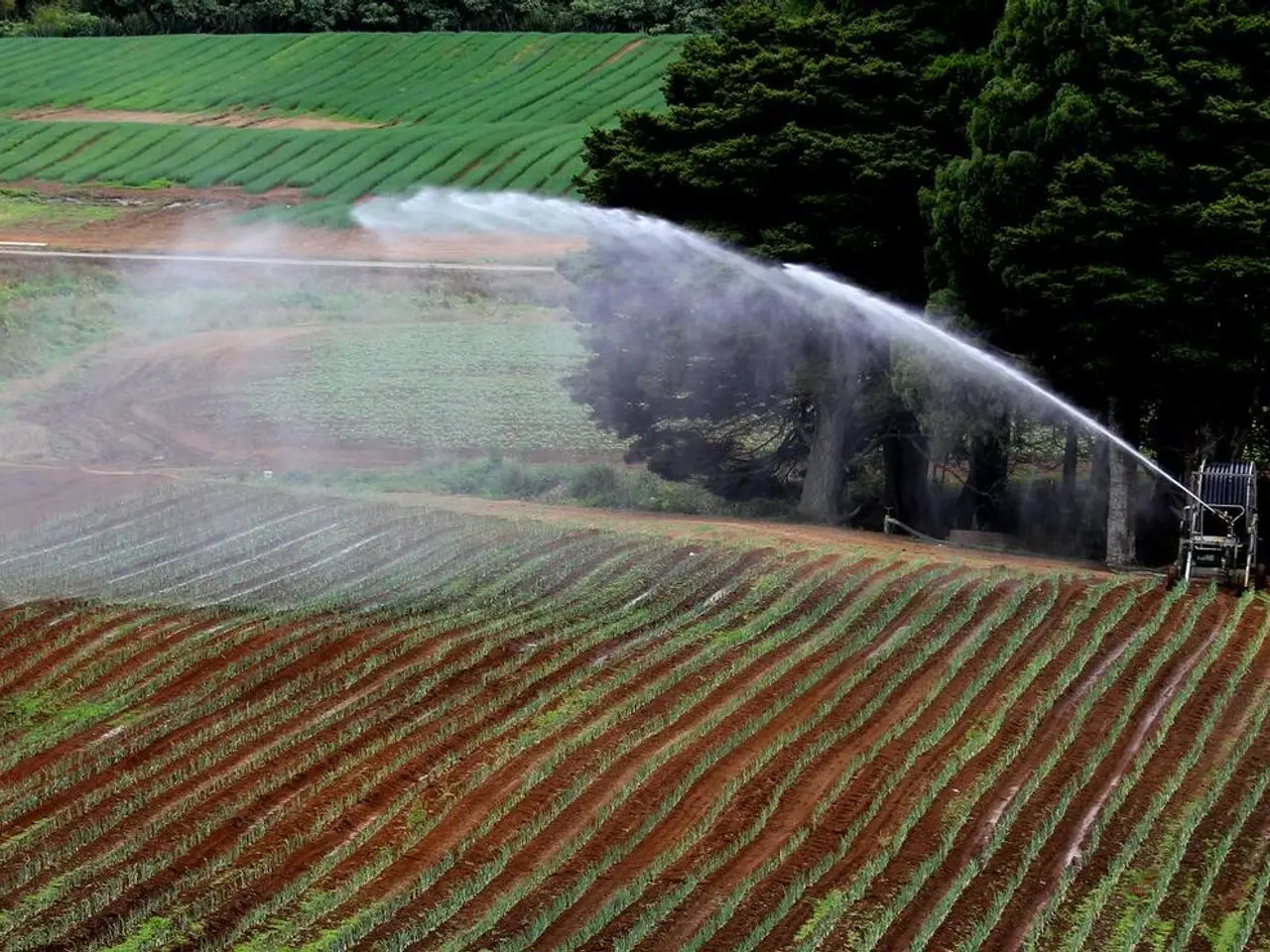Ancient Herbal Goldmine: Capitalize on the Thriving Herbal Industry with Brahmi Cultivation!
In the realm of herbal supplements and nootropics, one plant stands out for its cognitive-enhancing, anxiolytic, and neuroprotective properties: Brahmi (Bacopa monnieri). Originating from Indian Ayurveda, this traditional aquatic herb is now widely used in contemporary wellness practices.
Modern Uses of Brahmi
Brahmi's active compounds, notably bacosides A and B, are renowned for their ability to improve nerve impulse transmission and regenerate damaged neurons, thereby boosting memory, learning, and cognition. These compounds cross the blood-brain barrier to support brain function directly [1][3].
Brahmi also reduces anxiety, depression, and stress, making it a popular choice in both traditional and Western herbal medicine [1][5]. Its antioxidant effects help protect brain cells from oxidative damage, while modulating neurotransmitters like serotonin and acetylcholine promotes mental clarity and calmness [2][5].
In Ayurvedic practices, Brahmi is used in topical oils like Brahmi Thailam, which combines its compounds with sesame oil to enhance scalp and nerve nourishment and reduce mental toxins via transdermal absorption [2]. Brahmi is also included in Rasayana therapies to improve overall vitality and nervous system health [3].
Cultivation Methods
Brahmi naturally grows in wetlands, marshes, and moist soils in tropical and subtropical regions. Cultivation mimics these conditions, emphasizing a swampy or waterlogged environment [1].
Typically propagated through stem cuttings or division, cultivation methods aim to sustain genetic quality and adaptability. Modern cultivation often involves paddy fields or hydroponic-like conditions to ensure clean, pesticide-free, and high-yield crops for medicinal-grade herb production [1].
Leaves and stems are harvested when the plant matures but before flowering to maximise bacoside content, then dried for use in extracts, powders, or oil formulations [1][2]. Post-harvest processing involves extracts being prepared using solvents to concentrate active compounds like bacosides, which are standardised for supplements [1].
Summary
Brahmi continues to bridge traditional Ayurvedic wisdom and contemporary herbal medicine, serving as both a cognitive tonic and an adaptogenic herb to support brain health and mental well-being [1][2][3][5]. With the right agronomic practices, support for organic cultivation, and efficient marketing strategies, Brahmi can significantly contribute to sustainable livelihoods and holistic health solutions.
The optimal harvesting period for Brahmi is October to November. The upper parts of the plant are clipped during harvest, leaving 4-5 cm of the base intact for regeneration. With the right cultivation methods, approximately 60 quintals of dry herbage can be yielded per hectare from a single harvest. The traditional drying method for Brahmi involves shade drying at room temperature.
Commercial cultivation of Brahmi is being increasingly promoted, especially as the global herbal supplement industry continues to grow. Its use in Ayurvedic neurotonics, beauty products, and health beverages has created a steady and lucrative market for farmers. Up to 300 quintals of fresh herbage can be yielded per hectare.
Brahmi's medicinal properties and relative simplicity in cultivation practices make it a promising crop for herbal farmers and wellness entrepreneurs. With rising demand in both domestic and international markets, Brahmi is set to play a significant role in the herbal supplement industry.
Manual weeding every 15-20 days is essential during the early growth stages of Brahmi. Grasshoppers can occasionally damage Brahmi foliage, but can be managed using neem-based bio-insecticides. With the right care and attention, Brahmi can thrive and provide numerous benefits for mental health and well-being.
- Brahmi's active compounds, such as bacosides A and B, are not only known for enhancing cognitive function but also for effectively reducing anxiety, depression, and stress in both traditional and Western herbal medicine.
- In addition to its brain-boosting properties, Brahmi's antioxidant effects help protect brain cells from oxidative damage, promoting mental clarity and calmness by modulating neurotransmitters like serotonin and acetylcholine.
- Brahmi is traditionally used in Ayurveda for therapies like Rasayana, improving overall vitality and nervous system health, and topical oils like Brahmi Thailam, which enhances scalp and nerve nourishment and reduces mental toxins via transdermal absorption.
- Apart from its use in traditional practices, Brahmi is increasingly being used in contemporary health and wellness, including fitness and exercise routines, skin care, and parenting, due to its holistic benefits for mental health and well-being.
- Nutrition and aging are other areas where Brahmi might offer potential benefits, as it is often included in supplements, foods, and beverages marketed for supporting brain health and combating aging-related cognitive decline.
- An upsurge in the use of herbal supplements, particularly in the treatment of conditions like respiratory conditions, mental health, and medical conditions, makes the cultivation and commercialization of crops like Brahmi increasingly valuable.
- CBD, as a common supplement in the wellness industry, is sometimes compared to Brahmi due to their shared neuroprotective and anxiolytic properties, sparking research into potential synergies between these plants for various therapies and treatments.




